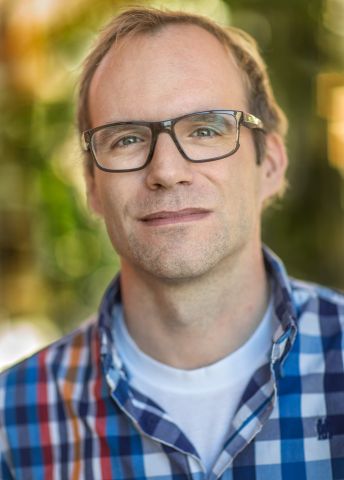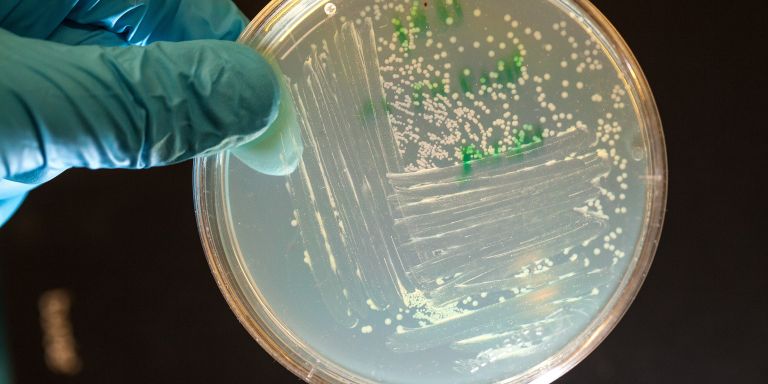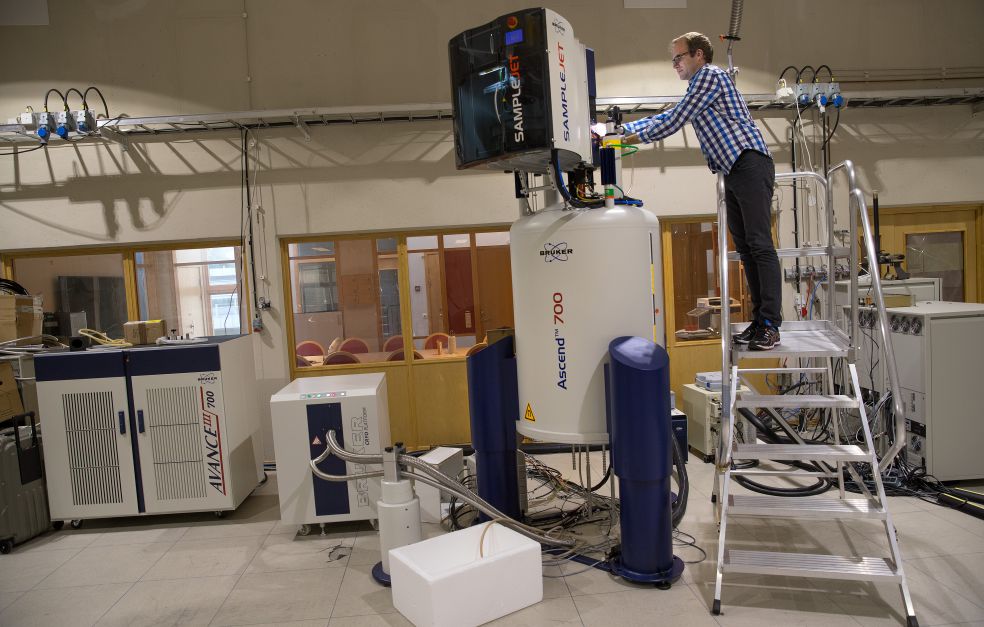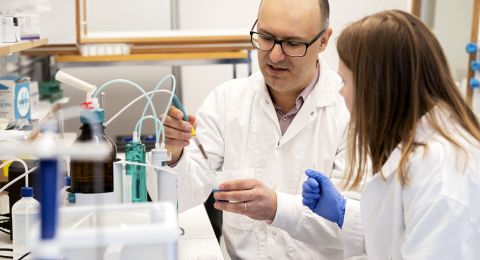Solar UV radiation is all around us. It damages DNA in living cells, but they usually repair themselves. Wallenberg Academy Fellow Björn Burmann intends to find out how. This may ultimately lead to better cancer therapies and new antibiotics.
Björn Burmann
Dr in Chemistry, specializing in Life Sciences
Wallenberg Academy Fellow 2016
Institution:
University of Gothenburg
Research field:
Macromolecular cellular protein mechanisms, studied using high-resolution NMR spectroscopy
Ultraviolet radiation from the sun can penetrate cells and break down DNA molecules. If cells did not contain complicated mechanisms to discover damage and repair it, cell DNA would undergo myriad mutations. DNA repair mechanisms were discovered in bacteria as long ago as the 1960s, but many aspects of the process are still shrouded in mystery. That is why Burmann, who is an assistant senior lecturer in the Department of Chemistry and Molecular Biology at the University of Gothenburg, is examining the repair in detail. He will be mapping the proteins involved in the process and the part they play.
Burmann is using a technique called nuclear magnetic resonance (NMR) spectroscopy to study the proteins. A sample of the material to be examined is placed in a strong magnetic field, which causes the atomic nuclei in the sample to give off energy. The frequency of the energy depends on which atoms are involved, and what other elements and structures surround them. The strength and frequency of the energy combine to reveal what atoms are present in the sample, their position in molecules, and how the molecules are positioned relative to one another.
Large magnets providing information about small samples
Burmann has chosen to study the repair mechanism in E. coli bacteria, a well-studied organism that is easy to deal with under laboratory conditions. The bacteria can be prepared by being “fed” atoms of the type the team wants to study. These have been marked by the researchers so they can be clearly seen using spectroscopy. This makes it possible to study the precise part of the structure that is of interest. The bacteria are then broken up, and the proteins inside them are placed in solution. A sample quantity the size of a finger is poured into a test tube, which is inserted in a magnet the size of a children’s playhouse.
Research laboratories are often cramped, but the magnet laboratory at the University of Gothenburg is airy – the magnetic fields are so strong that the machines have to be placed a good distance from one another, a couple of meters above the floor. To insert the sample, the researcher walks up to a small platform. It then takes anything from a few minutes to a week to obtain readings.
“The results we get show the position of the atoms, and reveal the structure of the proteins. A protein is not a fixed structure; it can its change shape. These changes are considerably larger when the protein binds to something. By combining information from many experiments, we can study the dynamics and interaction between all the various proteins at each stage of the repair process. I hope this will enable us to work out exactly what the process involves, at atomic level. I’ll be delighted if we succeed.”
More knowledge about cancer and antibiotics
If we can learn more about DNA repairs, we will be better able to understand certain types of cancer, and other diseases caused by genetic damage. This knowledge may eventually lead to new treatments. It is also useful to understand how bacteria, in particular, repair their DNA. An increasing proportion of pathogenic bacteria are becoming resistant to antibiotics, and research teams throughout the world are trying out new ways of attacking them.
“RNA polymerase is already being used as a target for current antibiotics, as well as for new ones. But it may also be possible to target other parts of the repair mechanism.”
Burmann was born in Rheda-Wiedenbrück in Germany, and completed his postgraduate studies at the University of Bayreuth. Having received his PhD, he continued his research at the University of Basel in Switzerland, before moving to the University of Gothenburg when he was admitted as a Wallenberg Academy Fellow. The magnets that he uses in his research can be found at only a handful of universities in Europe. Many of them are very much in demand, with long waiting times to use the advanced facilities.
“Being admitted as a Wallenberg Academy Fellow is a great honor. It is recognition of the research I have already done, and confirmation that what I plan to do seems promising.”
“Two things that attracted me to Gothenburg were that no other team there was using NMR spectroscopy to determine the structure of such large and complex biological molecules, and that the Swedish NMR Centre focuses on methodology development and providing service for different research teams. This suited me perfectly. And then there was the adventure of moving with my family to Sweden.”
Researchers not the only ones to experiment
Neither of Burmann’s parents were academics. His father was a joiner and his mother an accountant. But he does not think that a career in research was such a radical departure.
“For me, research means that you want to achieve a goal, and you try out different ways to get there. If nothing you try gives you any answers, you think again and improvise. But researchers aren’t the only ones to do this. I’m thinking of my dad, who built such beautiful things out of wood, and my uncle, who was an architect… They have really inspired me in my work,” Burmann explains.
He likes tricky problems – difficult things present a great learning opportunity. And he likes unexpected results.
“Of course, sometimes an unexpected result means nothing at all. But this quickly becomes clear on closer examination. And it might mean we’re really onto something.”
Text Lisa Kirsebom
Translation Maxwell Arding
Photo Magnus Bergström






